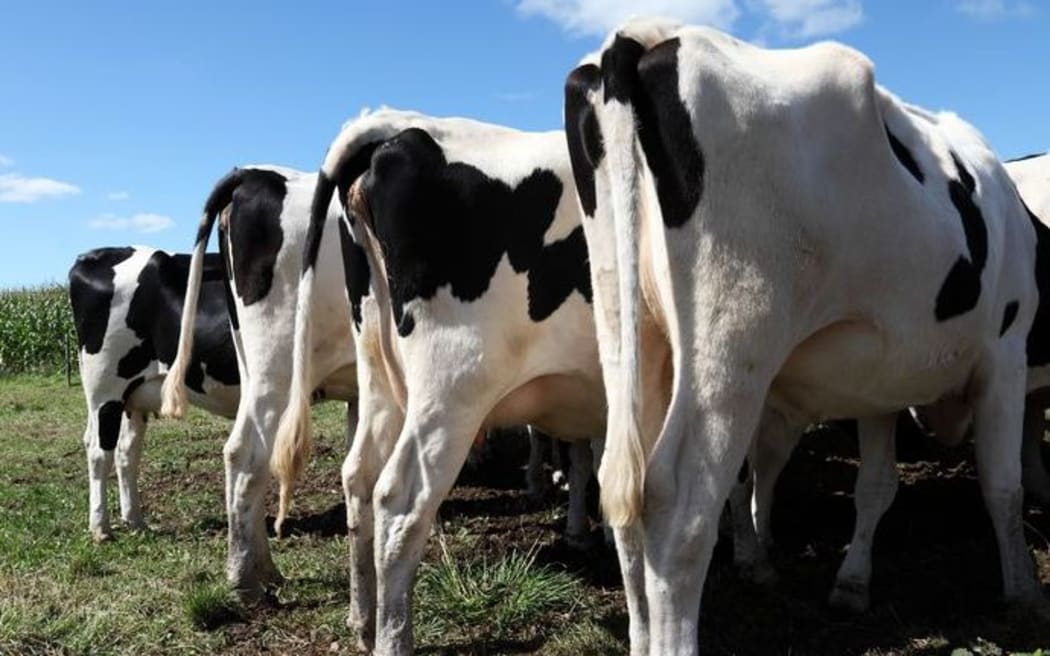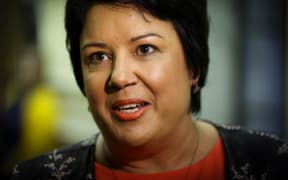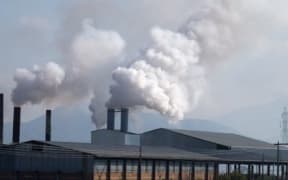The Treasury has raised the possibility of agriculture being included in the Emissions Trading Scheme (ETS) after years of being exempt from charges.
The move is suggested in a March Treasury briefing to Finance Minister Bill English and his two associates Steven Joyce and Paula Bennett.
The briefing outlines the financial risk the government faces from scrapping the one-for-two scheme - a 50 percent subsidy for polluters which meant they paid half the value of their greenhouse gas (GHG) emissions.

Photo: 123RF
In this year's Budget, Climate Change Minister Paula Bennett confirmed the subsidy would be phased out over a period of three years to make it easier for businesses, and consumers to adjust.
Over the years, businesses have bought and stockpiled New Zealand Units (NZU) for when they needed to use them.
The phasing out means polluters will have to submit one New Zealand Unit for every tonne of carbon by 2019, rather than one for two tonnes.
However, it does mean a large stockpile of units has been built up that the taxpayer would be liable for.
'A matter of time'
Currently agriculture is exempt from charges under the ETS.
The Treasury suggested that one option to reduce the financial burden of this stockpile is to make agriculture obliged to pay for units as well.
Catherine Leining is a policy fellow at non-profit research institute Motu and worked on the original design of the ETS.
She was not surprised the government had been assessing how it would meet its 2030 obligations and was considering as mitigation opportunities across the economy including agriculture.
"The fact that agriculture was not included in the 2016 review does not make the issue go away."
"New Zealand will still need to continue to think about its smart mitigation strategy for the agriculture sector just like it needs to do to for all sectors.
"I think agriculture could play a really useful role and a constructive role in contributing to national mitigation, whether it does that through the ETS or through some other means can be discussed."
Under the Paris agreement, New Zealand needs to reduce emissions to 30 percent below 2005 levels by 2030.
The government's own projections show that at the current rate of emissions, it will exceed the amount of pollution it can emit to meet that target. It also shows the ETS currently does not align with the target.
Morgan Foundation general manager Geoff Simmons said it was only a matter of time before the government would have to do something about agriculture.
"If we don't take action on agriculture and free allocation then the whole entire rest of the economy has to be carbon neutral by 2030, now obviously that isn't going to happen so I think the government is waking up to the realisation that because of these two risks we are going to have to take action on agriculture."

Anders Crofoot Photo: Supplied
But Federated Farmers climate spokesperson Anders Crofoot said the ETS was a blunt tool.
Making agriculture part of the scheme would make New Zealand farmers less competitive internationally, he said.
This country's farmers were efficient producers - meaning they emit less GHGs for the amount they produce.
"If countries are buying somebody else's product that's a bit cheaper because there's no ETS on it and they're producing it less efficiently then it's sort of a lose-lose situation."
If New Zealand's trading partners were doing something similar, farmers would be more accepting of being part of the ETS, Mr Crofoot said.
Methane and nitrous oxide, predominantly from agriculture, needed to be treated differently from carbon dioxide, he said.
Ms Bennett was not available to talk on the matter, but the Ministry for the Environment said it was not concerned about the potential cost of the ETS in the future.
The financial risk
The ETS uses New Zealand Units (NZU), similar to a currency, and runs the New Zealand Emissions Unit Registry, a little like a bank.
The ETS requires that tonnes of carbon emitted by certain sectors of the economy such as industry, electricity and transport are matched by these NZUs.
The government is now in a situation where there is a large bank of NZUs (around 140 million) that can be surrendered by polluters to meet their ETS obligations.
This means the government will have to offset those units in some way, either by mitigation in sectors not covered by the scheme, or by buying overseas units.
This presents a financial risk to the government.
Based on phasing out the one-for-two scheme over three years, the government estimates there will be a surplus of 51 million NZUs by 2020, which at a unit price of $25 will cost the government about $1.3 billion between 2020 and 2030.





